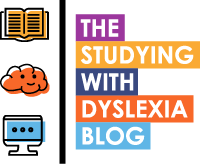A good part of learning and communicating these days involves the use of books, websites, worksheets, emails, PDFs and so on.
They all have one thing in common: Their style.
For many dyslexic students the style in which a piece of text is written can be the difference between learning and not learning.
With the Disability Act 2010 stating that educational organisations should not discriminate against students with any kind of disability, there are relatively easy changes that can be made to make a classroom, a lecture or a workplace more dyslexic friendly simple by amending the style with which text is used.
Dyslexia Friendly Style Guide 2018 (DOCX)
They all have one thing in common: Their style.
For many dyslexic students the style in which a piece of text is written can be the difference between learning and not learning.
With the Disability Act 2010 stating that educational organisations should not discriminate against students with any kind of disability, there are relatively easy changes that can be made to make a classroom, a lecture or a workplace more dyslexic friendly simple by amending the style with which text is used.
Announcing The British Dyslexia Association's New Dyslexia Style Guide.
It is with great pleasure to share with you the BDA's new Dyslexia Style Guide that you can use to inform the way that you produce dyslexia friendly content.
 |
| Please click to donate. |
The BDA writes in their latest announcement.
The British Dyslexia Association (BDA) is pleased to announce an update to the BDA Style Guide.
Researchers at the University of Southampton have reviewed the latest research and evidence of how text and content display can cause problems for people with dyslexia.
The updated Style Guide focusses on five areas: fonts, headings and structure, colour, layout and writing style. These areas can affect the readability and accessibility of written materials for everyone, not just those with dyslexia. The Style Guide includes new principles based on recent research into how word, letter and line spacing can improve readability.
Helen Boden, CEO of the British Dyslexia Association, highlights the importance of the BDA style guide, “Improving the display of text and content can make a real difference for children and adults with dyslexia. This guide is used by web developers, designers and publishers across the world to make their content more accessible. This update will ensure that these content developers can continue to strive to make their resources more readable".

